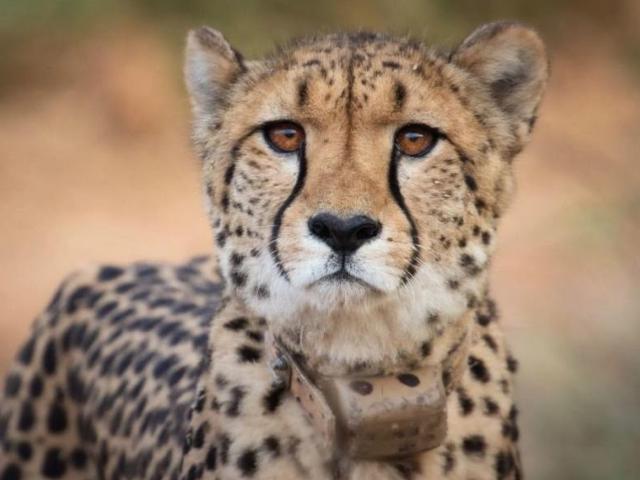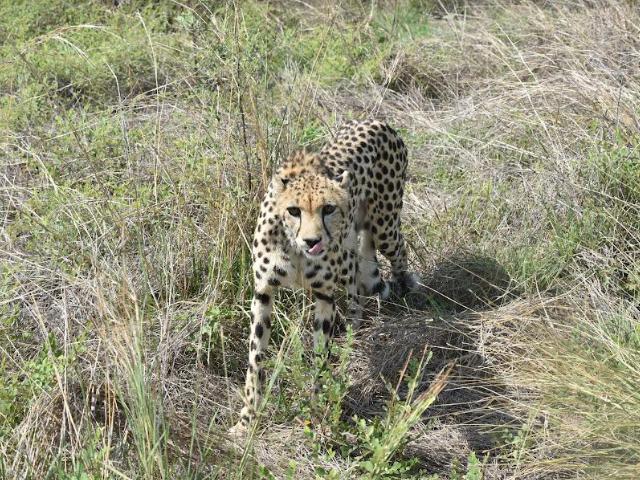In a huge embarrassment to senior members of the Steering Committee for Cheetah project and international experts including Laurie Marker of Cheetah Conservation Fund(CCF), one of the biggest names in cheetah conservation in the world, the Union ministry of Environment forest and climate change (MoEFC&C) denied cheetah deaths due to collar wounds in Kuno national park. On Saturday- July 15 – Namibia based Laurie Marker and steering committee members including its head Dr Rajesh Gopal had confirmed the deaths due to collar wounds.
Despite Dnial, Preps On To Cpture Cheetahs
The MoEFC&C denial was issued when the officials were preparing to capture cheetahs to remove their collars to prevent further casualties.Rattled by the 5 cheetah deaths including the two back to back losses in the last three days, the MoEFC&C issued a three page press release on Sunday afternoon. It said, “As per the preliminary analysis by National Tiger Conservation Authority (NTCA), the apex body entrusted with the implementation of Project Cheetah, all mortalities are due to natural causes. There are reports in the media attributing these Cheetah deaths to other reasons including their radio collars etc. Such reports are not based on any scientific evidence but are speculation and hearsay”. Of the 20 translocated cheetahs from South Africa and Namibia, five mortalities of adult individuals have been reported from Kuno national park, Madhya Pradesh, till date, the press release said. Project Cheetah is yet to complete a year and it will be premature to conclude the outcome in terms of success and failure, since Cheetah reintroduction is a long-term project, if further said.
Also read: Not Leopards, A Different 'Predator' is Killing Kuno Cheetahs
The ministry sources however, maintained that the collar wound theory was confirmed after a Steering Committee Meeting on Saturday. “ Foreign members of the committee also attended online. The visuals of the cheetah wounds were shown in the meeting followed by confirmation of collar-wound theory”, a senior member of the ministry said. Another meeting of the committee is scheduled on Monday. After initial confusion over the injuries of Tejas and Suraj- the two male cheetahs- , experts realized the death was caused by septicemia resulting from the radio collars worn around their necks in the prevailing wet conditions in the monsoons. The deaths were not a result of wounds inflicted by other animals but were attributed to bacteria infection.
More Cheetahs Develop Similar Symptoms
Meanwhile, Kuno is buzzing with activities. Two more cheetahs- Pawan and Gaurav have both been found with similar neck injuries. Pawan’s collar was removed after tranquilising the cat. This is for the third time that Pawan was tranquilised. He is the ame cheetah who had been wandering far away after his release in the wild. He was tranquilised twice in the past to bring him back to the enclosure. Gaurav is also found with the same neck injuries and is being treated. As the panic stricken Kuno staff started locating other cheetahs, they were not able to locate Nirva, a female, because of some technical fault in the collar worn by the animal.
Also read:Back to Back Cheetah Deaths in Kuno: South African Expert Unhappy Over Communication Gap
Another female cheetah Gamini is reportedly wandering outside Kuno in a hilly terrain and the monitoring team was trying hard to locate her whereabouts in the rain drenched Kuno forests. Twenty cheetahs- 8 from Namibia in September last year and 12 from South Africa in February 2023- were airlifted to Kuno in the much hyped first ever inter-continental cheetah translocation project. Of them five had died in the last four months. There are 11 free ranging cheetahs in Kuno while 4 are still in enclosures. Three cheetah cubs also died a few months ago. One of them survived and is being reared in captivity.




Comments
Post a Comment